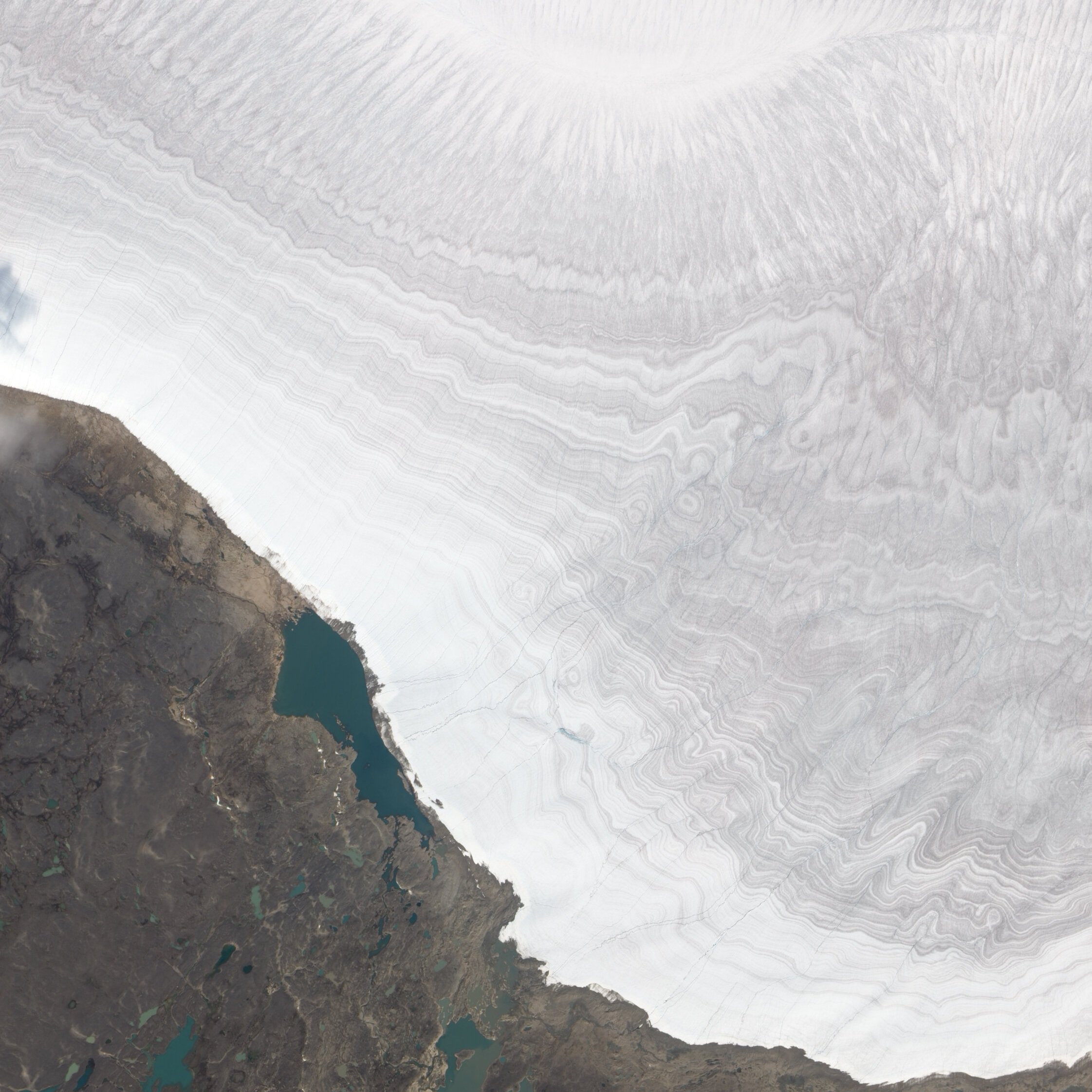
resetting the glacial field by returning a stone to the glacier that moved it
AN EXPEDITION TO BAFFIN ISLAND TO RETURN A STONE TO THE GLACIER THAT MOVED IT SOUTH TO OHIO DURING THE LAST ICE AGE
GLACIAL BOULDER
During the last ice age, a glacier dropped this 38lb (17kg) Canadian granite boulder in Ohio. Now some 30,000 years later, I’m attempting an expedition to reunite it with the last remnant of this glacier on Baffin Island where I plan to leave it behind so that it is ready to move again in the next ice age. I'm reuniting geologic friends, but I'm also resetting the glacial field so that when the next ice age arrives in the deep future, this stone will be ready to move again. It's an expedition-scale performance documented for contemporary audiences, but really I'm just in a deep conversation with two landscapes and a rock separated by the immense depths of time.
+ REMNANT ICE CAP
The Barnes Ice Cap in the middle of Baffin Island is the last remnant of the Laurentide Ice Sheet, the continental glacier that covered all of Canada and the northern US during the last ice age. The expedition will reunite these geologic relatives one last time before the ice sheet melts, in effect bridging between the last ice age and the next ice age.
satellite image of Baffin Island, Nunavut, Canada
detail of Barnes Ice Cap on Baffin Island, Nunavut, Canada
= GEOLOGIC REUNION
I’m in a long game with ice ages, past and future. By taking this stone back to the last remnant ice cap, I’m reuniting geologic friends, but I am also resetting the glacial field so that when the next ice age arrives (~100,000 years from now), this stone will be back where it started, ready to move again. It’s an expedition-scale performance documented for audiences, but really I’m deep in a conversational game with two landscapes separated by time.
EXPEDITION LOGBOOK
Over the past year I’ve been doing a literature review, as well as talking with geologist, museums, and educational institutions about the project. I’m documenting this entire project from start to finish. Read along and you’ll see it all: research trips, equipment design & fabrication, project management, community engagement, and more, all right here in the expedition logbook.
SPONSORSHIP BOARD
It’s going to take a lot of effort, coordination, and money to take this stone home: everything from the ski plane to land on the ice sheet, to chartering a CAC1 class icebreaking vessel, to publication expenses and more. Let me know if you can help make this project happen.
BIO
RYAN DEWEY works in sculpture, research, and land art, looking at connections between people, places, and land use to produce a kind of ecological dreaming. Donna Haraway has called his work one of her favorite examples of art about the anthropocene in her book Staying With The Trouble. His archive is housed at the Center for Art + Environment at the Nevada Museum of Art. He has lived on several islands, in several jungles, in one desert, on one mountain, and on two of the five Great Lakes. He is a member of the American Society of Polar Philatelists and has received residencies at ACRE (Chicago), the Alps Art Academy (Switzerland), and the Montello Foundation (Nevada), as well as serving two appointments as visiting researcher in cognitive science at Case Western Reserve University where he wrote the open-access book Hack the Experience: New Tools for Artists from Cognitive Science (Punctum Books, 2018).





